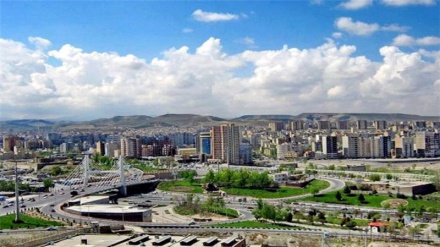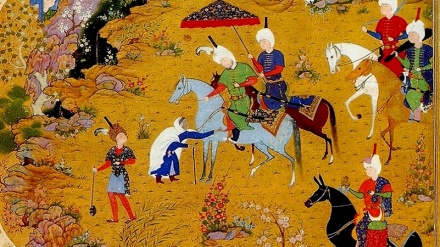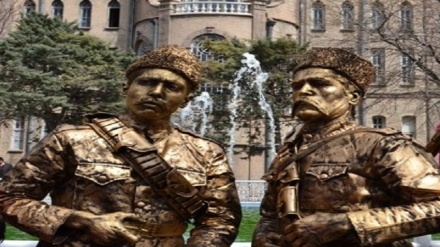Tabriz, 2018 (23)
Welcome to this week's episode of the series "Tabriz, 2018". One of the most important and famous branches of handicrafts in the city of Tabriz is rug-weaving. Tabrizi rugs' fabrics are highly diverse. Currently, Tabriz has been chosen as the World Carpet Weaving City by the Handicrafts Global Council.
The region of Azarbaijan has long maintained a distinguished status in production of carpets and rugs. Throughout the rule of Safavid Dynasty, large carpet-weaving workshops were established in this city, weaving highly valuable rugs and carpets; the majority of which are on display in major museums round the world.
Upon the transference of the Capital of Safavid Dynasty from Herat to Tabriz, the Iranian Arts' Tabriz School was founded. Following the gathering of numerous artists in Tabriz, this city turned into an arts hub, capturing the attention of countless enthusiasts. Meanwhile, the art of carpet-weaving grew and developed in the presence of highly skilled painters and designers such as Behzad and Sultan Mohammad. In fact, Iranian carpet which had reached the peak of its popularity throughout the Safavid era, faced a downward spiral in the wake of raids of Afghans and the ensuing turbulences. Only during the rule of Qajarid era, Iranian carpets relatively regained their elevated status. Thereafter, export of Iranian carpets to Europe as a commodity began, and when the stored Iranian carpets, especially those stored in Azarbaijan ran out, carpet-weaving was revived in large Iranian cities such as Mashhad, Kerman, Kashan, Arak, and Hamedan. Tabrizi traders exported rugs to Istanbul and European countries as of the second half of 19th Century AD.
Despite the popularity of traditional carpet designs; the designs of rugs and carpets produced in Tabriz have been highly developed in the recent decades, which has in turn granted an especial form and shape to these highly valuable carpets. These creativities have been on display in the patterns, color, and fiber of Tabrizi carpets, making these hand-woven products one of a kind.
A major development that has taken place in hand-woven Tabrizi carpets is usage of colors and dyes for filling the empty spaces. Upon the usage of harmonious and coordinated dyes, the beauty of used designs and dyes is further reinforced and bolstered.
Another innovation which has taken place in the hand-woven Tabrizi carpets is application of shades instead of colors. The unlimited usage of similar dyes and creation of shades, grants further depth to carpet patterns. Usage of white and colorful silk has been another feature of Tabrizi carpets in recent years.
Usually cotton, wool, or silk are used as raw materials in Tabrizi carpets, which are categorized among the premium Iranian carpets. The silk used in these carpets and rugs are mainly from Khorasan region and Tehran, and the wool used by Tabriz rug-weaving industry comes from the region of Maku, situated in northwestern Iran. One of the other parameters in weaving carpets in Tabriz is the usage of Tabrizi hooks and knives. These hooks are used for tying up the knots.
Tabrizi carpets are woven in a variety of sizes. The marginal lines of these carpets go beyond old and traditional criteria and have been highly developed by the related designers.
The number of rows within Tabrizi carpets vary from 24 lines up to 110 lines. The best way for assessment of the quality of carpets is consideration of the related carpet's rows and lines. The higher the number of carpet lines, the better the quality of that carpet.
The most important dimensions of the recently woven Tabrizi carpets are 3X2 meters, 2.5X3.5 meters, and 4X3 meters. At times, Tabrizi carpets maintain larger or smaller dimensions. In the meantime, weaving circular shaped rugs has grown in popularity in recent years.
It is interesting to know that the Tabrizi carpet patterns, in addition to 47 other Iranian carpet patterns have been registered as national artistic works.
Within the carpet hall of Tabriz municipality museum; the largest Iranian carpet which was woven in the year 1941, with an area of 111 square meters, is on display.
MR/SS


